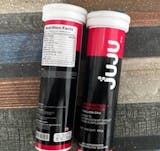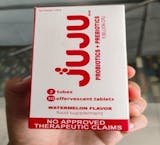Today, we’re going to look at the word “aerobic,” which is used a lot in the fitness world. You may have heard this word before, but what does it really mean? Aerobic exercise has been shown to be good for your health in many ways, from improving your heart health to making you feel less stressed and anxious. If you know what it means to exercise aerobically, you can make the most of your workouts and improve your health and well-being as a whole. So, let’s take a look at what does aerobic refer to, how it works, and why it’s such an important part of a healthy lifestyle.
IN THIS ARTICLE
09. Conclusion
What Is Aerobics?
The term aerobic actually means “with oxygen,” which means that breathing controls the amount of oxygen that can make it to the muscles to help them burn fuel and move. The term is from Dr. Kenneth Cooper who authored the best-selling book Aerobics and introduced a new word to the American lexicon. He also spurred a fitness revolution. He is also considered to be the “Father of Aerobics”.
Aerobic exercise is a type of cardio that gets your heart beating faster. When you do aerobic exercise or aerobic training, your heart beats faster and your lungs take in more oxygen. Aerobic exercises can be done for a long time, but how long depends on how hard they are. Your muscles and cardiovascular system collaborate in order to assist you do an activity that you can keep up for at least 30 minutes.
Aerobic exercise, also called cardio, is a type of workout that gets your heart rate up and makes you breathe harder, but not so much that you need to stop and rest after a short time. Think about things like running, speed walking, climbing stairs, cycling, and swimming.
BENEFITS OF AEROBIC EXERCISE
Read on to find out why aerobic exercises are beneficial and good for your cardiovascular conditions and how to add it to your daily routine.
Improves The Health Of Your Heart
Aerobic exercise is good for people with not so good cardiovascular health or at risk for heart disease, according to the American Heart Association and most doctors. That’s because exercise makes your heart stronger and helps it pump blood around your body more efficiently.
Heart exercise can also help lower blood pressure and keep arteries clear by raising “good” high-density lipoprotein (HDL) cholesterol and lowering “bad” low-density lipoprotein (LDL) levels of cholesterol in the body.
If you want to lower your blood pressure and cholesterol, try to do 40 minutes of aerobic exercise three to four times a week at a moderate to vigorous intensity.
Helps Regulate Blood Sugar
Regular exercise can keep your weight in check and keeps insulin levels in check. It also helps lower blood sugar levels. In a study of people with type 2 diabetes, researchers found that these effects may happen with either aerobic or anaerobic movement.
Helps You Lose Weight
Combined with a healthy diet, aerobic exercise helps you lose body weight and keep it off. Like any other form of intense exercise, this can help you shed some pounds. Always remember that consistency is the key. By consistently do aerobic activities such as distance running or aerobic dancing , you can lose body weight and that can be helpful in reducing the risk of joint pain and major muscle pains.
Improves Your Mood
Aerobic exercise may help lessen the sadness of depression, ease the stress of anxiety, and help you relax. It can make you feel better about yourself and improve your mental health. It can also help you sleep better.
Improves Your Strength, Fitness, And Endurance
When you start doing aerobic exercise regularly for the first time, you may feel tired. But in the long run, you’ll have more energy and feel less tired.
Over time, you can also get stronger bones and muscles and improve your heart and lungs.
Strengthens Immune System
Immunoglobulins in the blood were found to be higher in people who did regular aerobic exercise at a moderate level. In the end, that makes the immune system stronger. The immune systems of the women who did not exercise did not get better, and their cortisol levels were much higher than those of the women who did exercise.
Budget friendly and easy to do
You can get in shape without fancy gear or a gym membership. You can get daily exercise by walking around your neighbourhood or jogging with a friend on a nearby trail. You can ask your gym instructor for some exercise program but to be honest you can find many types of exercise you can choose from that can be considered as aerobic.
Manage long-term conditions
Aerobic exercise might help control blood sugar and lower blood pressure. It can help people with arthritis feel less pain and do their jobs better. It can also make people with cancer healthier and improve their quality of life. If you have heart disease, aerobic exercise might help you deal with it.
Helps You Stay Independent And Active As You Get Older
Strengthening your muscles with aerobic exercise can help you stay mobile as you get older. Exercise can also make older people less likely to fall and get hurt when they do. It can also make your life better. Increasing the intensity of the exercise can help you to produce energy in the long time and improves your health conditions.
Your mind also stays sharp when you do aerobic exercise. Regular exercise may help protect older people’s ability to remember, reason, judge, and think (cognitive function). It might also help children and young adults think better. It can even help keep people from getting dementia and help people with dementia think better.
Examples of Aerobic Exercise
You can do aerobic exercise anywhere. Some can be done at home, and others can be done at the gym. Here are some examples of aerobics:
- Running: Running is a popular aerobic exercise that can be done indoors on a treadmill or outside in a park or on a trail.
- Cycling: Cycling is another popular aerobic exercise that can be done on a stationary bike indoors or on a road or trail outdoors.
- Swimming: Swimming is a low-impact aerobic exercise that is easy on the joints and can be done in a pool or open water.
- Dancing: Dancing is a fun and effective way to get your heart rate up and improve your endurance. You can take a dance class or simply dance at home to your favorite music.
- Brisk walking: Walking is a low-impact form of aerobic exercise that can be done almost anywhere and requires no special equipment.
- Jumping rope: Jumping rope is a high-intensity aerobic exercise that can improve your cardiovascular fitness and coordination.
- High-intensity interval training (HIIT): HIIT involves alternating periods of high-intensity exercise with periods of rest or low-intensity exercise. This can be done with a variety of exercises, such as running, cycling, or bodyweight exercises.
- Rowing: Rowing is a full-body aerobic exercise that can be done on a rowing machine indoors or on the water outdoors.
- Swimming: Swimming is a low-impact activity, so it’s good for people who are prone to injury, are healing from one, or have limited mobility. It can tone your muscles and help you get stronger and last longer.
- Cardio kickboxing: Kickboxing is a high-impact workout that helps you get stronger and last longer. It may also help you feel less stressed and make your reflexes better.
- Zumba: If you like to dance, Zumba is a fun way to get your heart rate up and burn calories. After warming up, your teacher will show you and the rest of the class easy dance moves to fast-paced music. At the end, you’ll stretch and cool down. Zumba is good for your heart, makes you more coordinated, tones your whole body, and may even help you feel less stressed.
How to Get Started with Aerobic Exercise
People who don’t exercise much should start out slowly and gradually increase the intensity, duration, and frequency of their workouts. This gives the heart, lungs, and muscles time to get used to the new level of exercise. Aerobic exercise can be broken up into 10-minute sessions for people who have never worked out before. This makes exercise more doable and possible.
Physical activity that lasts 10 minutes or less can be just as good as activity that lasts longer than 10 minutes, as long as the total amount of time spent exercising each week stays the same. For example, 15 10-minute workouts spread out over the week can have the same benefits as five 30-minute workouts.
If you can’t do all of these things, it’s usually better to do some kind of exercise than none at all, unless your doctor tells you to stay away from physical activity for medical reasons.
How Much Aerobic Exercise Should You Do?
Each week, adults should do one of the following amounts of physical activity to keep their hearts healthy and lower their risk of getting atherosclerotic cardiovascular disease. (ASCVD):
- 150 minutes of moderate-intensity physical activity
- 75 minutes of vigorous-intensity physical activity
- An equivalent combination of moderate and vigorous physical activity
Exercise intensity is grouped into the following categories:
- Light intensity: Walking slowly, cooking, light housework
- Moderate intensity: Brisk walking (2.4-4.0 miles per hour), bicycling (5-9 miles per hour), dancing, active yoga, recreational swimming, gardening, vacuuming, raking leaves
- Vigorous intensity: Jogging, running, hiking, bicycling (more than 10 miles per hour), swimming laps, jumping rope, aerobics, weight lifting, stair climbing, shoveling snow
Aerobic vs Anaerobic
The differences between Aerobic and anaerobic physical exercise can be easy to distinguish. You can easily determine which is which. But aerobic and anaerobic exercises is both helpful in increasing your aerobic capacity and improve your aerobic metabolism.
Aerobic exercise is any kind of physical activity that gets your heart rate up and makes you breathe faster. It requires using large groups of muscles to move your body for a long time. You take deeper breaths so that your lungs can get more oxygen uptake. And your heart beats faster to get oxygen-rich blood to your muscles. Your muscles use that oxygen to make the energy they need to keep moving. People call these kinds of exercises “aerobic” because they need oxygen to give you energy. Aerobic exercises speed up a person’s heart rate and breathing so that their muscles get the maximal oxygen uptake.
Anaerobic exercise, on the other hand, is any kind of physical activity that you can only keep up for a short time. It is made up of short, intense bursts of movement. To keep moving, your muscles require additional oxygen when you work out. But when you do anaerobic exercise, your heart and lungs can’t keep up with how hard your muscles are working.
These exercises are anaerobic because they don’t make your body take in and move around more oxygen. During anaerobic exercise, when the body doesn’t have enough oxygen, it breaks down its stores of glucose. This causes lactic acid to build up in the muscles.
Aerobic Exercise: Common Mistakes and Myths
Too much time is needed for exercise
This is probably the main reason why people don’t work out. But the idea that working out takes too much time isn’t true. All you need is 20 to 30 minutes of activity that gets your heart rate and breathing rate up. It doesn’t have to be done all at once. It’s just as helpful to do things in small chunks throughout the day. You can also do exercise snacks, which are short bursts of activity that can last anywhere from 30 seconds to two minutes.
You should go to the gym.
A workout is a sacred ritual for a lot of people. It’s a time to work out and meet new people. But going to the gym isn’t your only option for getting some exercise.
The easiest way to get exercise is to just go for a walk. You don’t need any special equipment, simply open your door. The pandemic has also taught us how to change exercises we do at home. Want to train your muscles at home? No problem. You can work out your whole body without any equipment. You can do push-ups or use milk jugs as weights. There are also a lot of exercise videos on YouTube, Zoom, and Instagram that you can use to turn your living room into a gym.
For exercise to work, it has to hurt.
‘No pain, no gain!’ Right? Wrong. Exercise doesn’t have to hurt, either while you’re doing it or the next day. If you’re still sore the day after working out, you probably have delayed onset muscle soreness (or DOMS), which is caused by tiny tears in the muscle. It’s not dangerous and usually goes away in a day or two. It often happens when you work out muscles that aren’t used to it. This can happen when you first start your program or when you change the way you work out.
The best time to work out is in the morning.
Most people tend to work out first thing in the morning. Many people start their day by working out to get their bodies and minds going. Also, you won’t have to think about it all day until you do it.
Since your body has an internal clock that controls many of its functions, when you work out can have different effects. Even though there isn’t much evidence that working out in the morning is best for weight loss, it can help you get more done during the day and fall asleep faster. But as the day goes on, your body’s temperature rises, which may make your muscles contract more strongly, make your workouts more effective, and maybe even make you perform better.
Frequently Asked Questions
How long should you do aerobic exercise?
The American Heart Association recommends a minimum of 30 minutes of cardiovascular exercise 5 to 7 days per week. Don’t forget warm-up, cool-down and stretching exercises in your aerobic exercise session.
What is the best time of day to do aerobic exercise?
Between 2 p.m. and 6 p.m., your body temperature is at its highest. This may mean you’ll be exercising during the window of time your body is most ready, potentially making it the most effective time of day to work out.
What is the recommended frequency for aerobic exercise?
The American Heart Association recommends a minimum of 30 minutes of cardiovascular exercise 5 to 7 days per week.
How do you know if you're doing aerobic exercise correctly?
Another way to think about aerobic exercise, or cardio, is that it’s the type of workout that increases your heart rate and breathing but not so much that you feel like you need to stop and rest after a short period of time.
How long does it take to see results from aerobic exercise?
Within three to six months, an individual can see a 25 to 100% improvement in their muscular fitness – provided a regular resistance program is followed. Most of the early gains in strength are the result of the neuromuscular connections learning how to produce movement.
.
Conclusion
Aerobic exercise is an important part of a healthy way of life. It has many health benefits and makes you fitter and healthier all around. By making aerobic exercise a regular part of your life, you can improve your heart health, keep your weight under control, and lower your risk of getting chronic diseases. So, the next time you put on your running shoes or jump in the pool, think about how important aerobic exercise is and how many good things it can do for you.
Talk to your doctor before you start a new workout plan. This is especially important if you have a health problem or take medicine.










